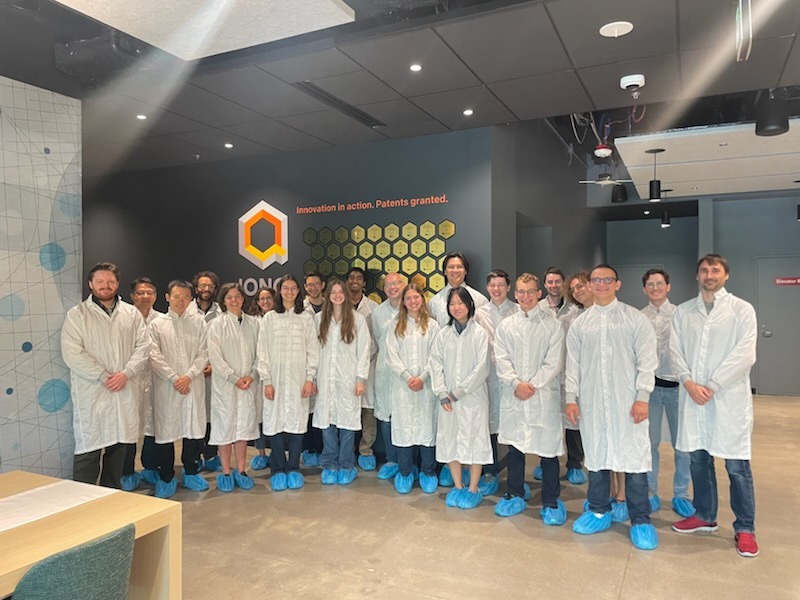September 22, 2025
Ten undergraduates from across the country spent the summer exploring cutting-edge research in quantum information science as part of QuantumX’s first National Science Foundation Research Experience for Undergraduates (REU) program.
Andrea Coladangelo, a computer science professor and member of QuantumX, led the 10-week program, with the help of Kai-Mei Fu, director of QuantumX and physics and electrical and computer engineering professor, and Kaela Worrall, QuantumX program manager. The program provides hands-on research experience, professional development opportunities, and a glimpse into graduate-level study and industry careers in the rapidly expanding field.

“Summer research experiences like REUs can be truly eye-opening for an undergrad who thinks they might be interested in research, but hasn’t had the chance to try it,” said Coladangelo. “Helping create more of those opportunities for new students is definitely our main motivation now for leading this REU.”
Coladangelo, who studies quantum information, said the program also fills a gap. While other NSF-funded REUs cover physics and computer science more broadly, this is the first one dedicated to the spectrum of quantum research, from theory to experimental work.
The program opened with a one-week “bootcamp” combining lectures and experimental lab sessions, designed to bring students up to speed on the fundamentals and to build community. For the rest of the summer, students worked under the guidance of faculty mentors across computer science, electrical and computer engineering, physics, and materials science and engineering. Coladangelo said their days varied widely, depending on whether they were working on theory or experimental projects, but there were many joint activities.
The cohort came together weekly for industry seminars, professional development activities, and social outings. Students toured IonQ’s quantum manufacturing facility in Bothell, Washington, went paddleboarding on Lake Union and hiked Rattlesnake Ledge in Issaquah, Wash., and, at the end of the summer, gave presentations about their projects at Microsoft Quantum.
Simon Chambers-Trubatch, a junior at Carleton College, was in Professor of Physics Boris Blinov‘s lab. He worked to stabilize a laser to a hollow cathode lamp via the optogalvanic effect and then saturation absorption spectroscopy.
“The breadth of the program drew me in,” he said. “I was excited about the chance to learn about lots of different physics in the University of Washington’s wide-ranging department.”
Alvan Arulandu, a Harvard sophomore studying math and computer science, worked with Paul G. Allen School of Computer Science and Engineering professor Jerry Li on agnostic learning for product mixed states. Together, they proposed and proved an algorithm for the problem and developed a partial non-adaptive lower bound.
Arulandu also joined an experimental side project in UW’s QT3 lab, where he helped achieve data transmission using a pulsed laser. He said the dual exposure gave him confidence to pursue a career in the field.
“The experience was phenomenal,” Arulandu said. “This program gave me a clear vision of the life of a theory grad student. The UW quantum theory group is very tight-knit. This program has given me the confidence to do real research and take a career in quantum information seriously.”
He added that the experience shifted his goals.
“The program made me want to go to graduate school and pursue a research career, when I had not wanted to do either,” Chambers-Trubatch said.
With the growing national demand for a quantum-ready workforce, programs like QuantumX’s are helping train the next generation of scientists to advance both fundamental discoveries and new technologies.
